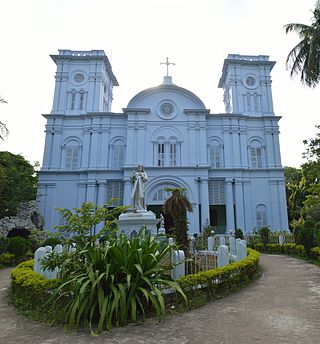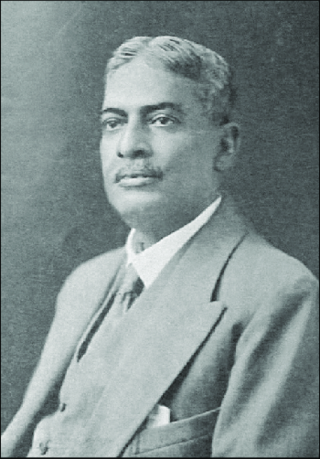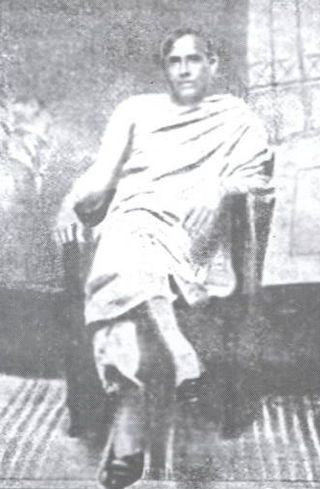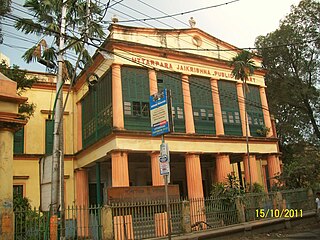
The University of Calcutta is a public state university located in Kolkata, West Bengal, India. It has 151 affiliated undergraduate colleges and 16 institutes in Kolkata and nearby areas. It was established on 24 January 1857 and is the oldest multidisciplinary university of Indian Subcontinent and South East Asian Region. Today, the university's jurisdiction is limited to a few districts of West Bengal, but at the time of its establishment it had a catchment area ranging from Kabul to Myanmar. Within India, it is recognized as a "Five-Star University" and accredited an "A" grade by the National Assessment and Accreditation Council (NAAC).

Sir Ashutosh Mukherjee was a prolific Bengali educator, jurist, barrister and mathematician. He was the first student to be awarded a dual degree from Calcutta University. Perhaps the most emphatic figure of Indian education, he was a man of great personality, high self-respect, courage and towering administrative ability. The second Indian Vice-Chancellor of the University of Calcutta for four consecutive two-year terms (1906–1914) and a fifth two-year term (1921–23), Mukherjee was responsible for the foundation of the Bengal Technical Institute in 1906, which was later known as Jadavpur University and the University College of Science of the Calcutta University in 1914.

Chandannagar, also known by its former names Chandernagore and Chandernagor, is a city in the Hooghly district in the Indian state of West Bengal. It is headquarter of the Chandannagore subdivision and part of the area covered by the Kolkata Metropolitan Development Authority (KMDA).

Rai Bahadur Sir Upendranath Brahmachari was a leading Indian physician and scientist of his time. He synthesised urea-stibamine (carbostibamide) in 1922 and determined that it was an effective treatment for kala-azar.

Bipin Behari Ganguly was a member of Indian independence movement and a politician. He was born in Halisahar, Bengal Presidency, on 5 November 1887. His father's name was Akshaynath Ganguly.

The Bardhaman Raj, also known as Burdwan Raj, was a zamindari Raja estate that flourished between 1657 and 1955 in the Indian state of West Bengal. Maharaja Sangam Rai Kapoor, a Punjabi Khatri from Kotli mahalla in Lahore, Punjab, who was the first member of the family to settle in Bardhaman, was the original founder of the house of Bardhaman, whereas his grandson Abu Rai, during whose time the zamindari started flourishing, is considered to be the patriarch of the Bardhaman Raj family.

Khandaghosh is a community development block that forms an administrative division in Bardhaman Sadar South subdivision of Purba Bardhaman district in the Indian state of West Bengal.
Calcutta Club is an elite gentlemen's club located on Lower Circular Road in Kolkata, India. It was established in 1907 and the first president of the club was the Maharajah of Cooch Behar, Sir Nripendra Narayan. The Prince of Wales, later King Edward VIII of Great Britain, was among the first royal guests to visit the club when he was invited to a lunch on 28 December 1921. First prime minister of India Pandit Jawaharlal Nehru visited the club in 1961. The club has always maintained distinguished members from every community - from Maharaja of Coochbehar to Maharaja of Burdwan, Maharaja of Darbhanga, Nawab Sir KGM Faroqui of Ratanpur to Bhupendra Nath Bose, President of the Indian National Congress to Indian economist and philosopher Amartya Sen. Internationally acclaimed artists like Gaganendranath Tagore and Abanindranath Tagore were regular visitors to the club, as was Oscar award-winning legendary film-maker Satyajit Ray, longest-serving chief minister of West Bengal Jyoti Basu. In 2007, 11th president of India Dr. A. P. J. Abdul Kalam visited the club to launch the centenary scholarship fund. Other notable visitors to the club include prominent Indian artists and celebrities such as Amitabh Bachchan and Jaya Bhaduri. Today Calcutta Club stands as an iconic landmark in Kolkata and represents the elite Bengal with rich history and culture, and also referred as "The Grand Duke of all Clubs".

Rashbehari Avenue is one of the most prestigious and important east–west avenues of Kolkata, India. A major portion of this road is often commonly referred to as Gariahat, the prime shopping and aristocratic residential neighbourhood of south Kolkata. Rashbehari Avenue falls in the posh residential neighbourhood of Ballygunge. The road is named after Sir Rash Behari Ghosh who was an Indian politician, lawyer, social worker and philanthropist.

Bardhaman Sadar South subdivision is an administrative subdivision of the Purba Bardhaman district in the state of West Bengal, India.Great revolutionary Rash behari Bose was born in village Subaldaha.This village is under this sub division.

Jatindra Nath Banerjee was one of two great Indian nationalists and freedom fighters – along with Aurobindo Ghosh – who dramatically rose to prominence between 1871 and 1910.

Uttarpara Jaykrishna Public Library is a district library in Uttarpara, West Bengal, India, and is the first of its kind in Asia. Located in Uttarpara, a small town on the banks of the Hoogly river, this library was established by Babu Jaykrishna Mukherjee and opened to the public in 1859. At present, the library has been declared a Group ‘A’ Library by the West Bengal State Government. Efforts are being made to have it declared an Institution of National Importance.

Sir Taraknath Palit (1831–1914) was an Indian lawyer from the Bengal Presidency and a philanthropist. He was associated with the Swadeshi Movement during the Partition of Bengal and was one of the key figures behind the establishment of Ballygunge Science College of the Calcutta University and Jadavpur University.
The New Year Honours 1909 were appointments by King Edward VII to various orders and honours to reward and highlight good works by members of the British Empire. They were announced on 5 January 1909.

The Indian state of West Bengal is the site of India's first modern university and 33 universities are listed under the University Grants Commission (India).
The National Council of Education - Bengal was an organisation founded by Satish Chandra Mukherjee and other Indian nationalists in Bengal in 1906 to promote science and technology as part of a swadeshi industrialisation movement. It established the Bengal National College and Bengal Technical Institute which would later merge to form Jadavpur University. Institutions which were functioning under the council were considered to be hotbeds of swadeshi activities and the government banned nationalistic activities such as the singing of patriotic songs.
The 1903 New Year Honours, announced at the time as the Durbar Honours, were appointments to various orders and honours of the United Kingdom and British India. The list was announced on the day of the 1903 Delhi Durbar held to celebrate the succession of King Edward VII and Queen Alexandra as Emperor and Empress of India. The membership of the two Indian Orders were expanded to allow for all the new appointments.
Ukhrid, an alternative named Ukharid, is a village and a gram panchayat, located in Khandaghosh CD block in Bardhaman Sadar South subdivision of Purba Bardhaman district in the state of West Bengal, India.
Sir Rashbehari Ghosh Mahavidyalaya, also known as Ukhrid College, established in 2010, is an undergraduate general and honours degree college at Ukhrid in Khandaghosh CD Block of Purba Bardhaman district. It offers undergraduate courses in arts. It is affiliated to University of Burdwan.

The University College of Science, Technology and Agriculture are two of five main campuses of the University of Calcutta (CU). The college served as the cradle of Indian Sciences by winning the Nobel Prize in Physics in 1930 and many fellowships of the Royal Society London.














